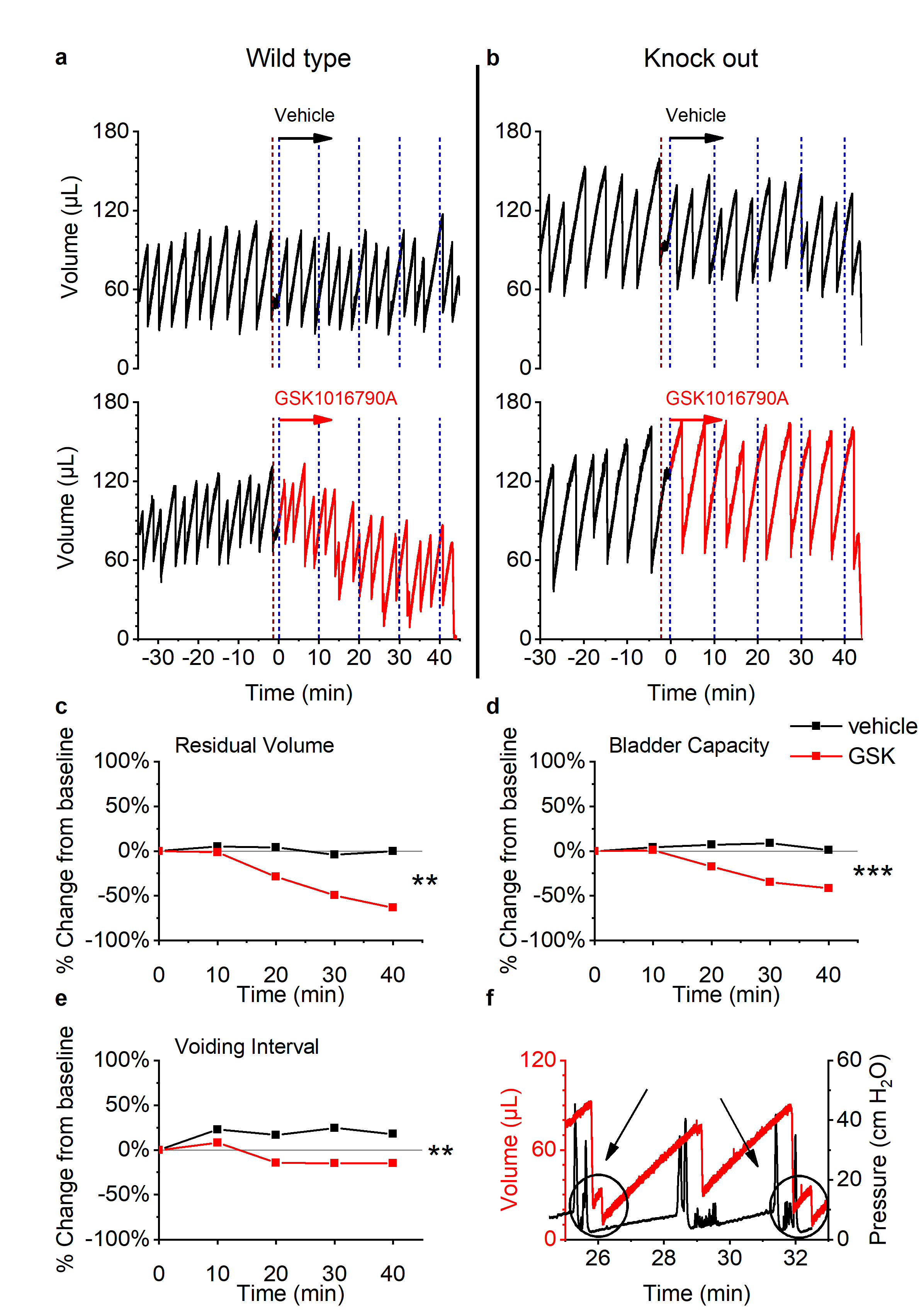Back
Poster, Podium & Video Sessions
Moderated Poster
MP49: Urodynamics/Lower Urinary Tract Dysfunction/Female Pelvic Medicine: Basic Research & Pathophysiology
MP49-14: New technique for video urodynamics in mice allows new insights into the role of ion channel TRPV4 in the murine lower urinary tract
Sunday, May 15, 2022
4:30 PM – 5:45 PM
Location: Room 228
Helene De Bruyn*, Noémie Luyts, Thomas Voets, Wouter Everaerts, Leuven, Belgium

Helene De Bruyn, MD, MS
KU Leuven
Poster Presenter(s)
Introduction: Transient receptor potential channel vanilloid 4 (TRPV4) is a member of the TRP superfamily of cation channels. This channel is activated by mechanical stimuli and is highly expressed in the urothelial cell layer of the bladder, where it is implicated in sensing the filling state of the bladder. While the link between TRPV4 activity and voiding frequency has been firmly established, the effects of TRPV4 activity on bladder capacity, voiding efficiency and urethral flow remained unclear. We therefore applied videocystometry, a new technique that combines classic cystometry with continuous x-ray based imaging, which for the first time allows precise quantification of volume, flow and conductance throughout multiple consecutive filling and voiding cycles. This way we obtained new insights in the role of TRPV4 using both TRPV4 knockout (KO) animals and the TRPV4 agonist GSK1016790A.
Methods: We performed urethane-anesthetized videocystometry on 11 female wild type (WT) and 11 female TRPV4 KO mice. First, baseline videocystometry measurements were performed during 40 minutes. Next, the bladder was instilled with 10 µM GSK1016790A (n=6) or its vehicle DMSO (n=5) during another 40 minutes. Statistical analysis was performed using two-way repeated measures analysis of variance (ANOVA).
Results: Using videocystometry on anesthetized mice, we found that intravesical instillation of the TRPV4 agonist, in contrast to vehicle, changed the voiding pattern in WT animals but not in TRPV4 KO mice (fig. 1a-b). We noted a significant decrease in residual volume (p = 0.0095), bladder capacity (p = 0.0003) and voiding interval (p = 0.0089)(fig. 1c-e). We did not find a difference in voiding efficiency, urethral flow rate or conductance. We identified a typical pattern in the volume traces of WT animals receiving the TRPV4 agonist, where a large void is followed rapidly by a very small void (fig. 1f). In TRPV4 KO animals, we could not find any significant effect of GSK1016790A instillation, demonstrating the selectivity of the agonist in our setting.
Conclusions: We can conclude that TRPV4 activation effectively reduces residual volume and bladder capacity in WT but not in KO mice. This confirms the role of TRPV4 as a potential target for the treatment of bladder over- and underactivity.
Source of Funding: None

Methods: We performed urethane-anesthetized videocystometry on 11 female wild type (WT) and 11 female TRPV4 KO mice. First, baseline videocystometry measurements were performed during 40 minutes. Next, the bladder was instilled with 10 µM GSK1016790A (n=6) or its vehicle DMSO (n=5) during another 40 minutes. Statistical analysis was performed using two-way repeated measures analysis of variance (ANOVA).
Results: Using videocystometry on anesthetized mice, we found that intravesical instillation of the TRPV4 agonist, in contrast to vehicle, changed the voiding pattern in WT animals but not in TRPV4 KO mice (fig. 1a-b). We noted a significant decrease in residual volume (p = 0.0095), bladder capacity (p = 0.0003) and voiding interval (p = 0.0089)(fig. 1c-e). We did not find a difference in voiding efficiency, urethral flow rate or conductance. We identified a typical pattern in the volume traces of WT animals receiving the TRPV4 agonist, where a large void is followed rapidly by a very small void (fig. 1f). In TRPV4 KO animals, we could not find any significant effect of GSK1016790A instillation, demonstrating the selectivity of the agonist in our setting.
Conclusions: We can conclude that TRPV4 activation effectively reduces residual volume and bladder capacity in WT but not in KO mice. This confirms the role of TRPV4 as a potential target for the treatment of bladder over- and underactivity.
Source of Funding: None


.jpg)
.jpg)